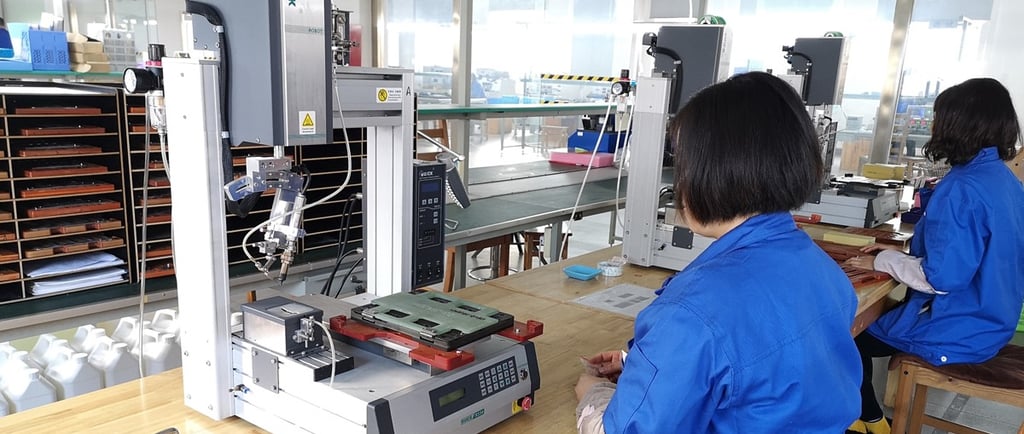How to Test a Hall Effect Current Sensor
Learn how to test a Hall Effect current sensor with easy-to-follow steps. Discover the tools, tips, and professional insights needed to ensure your sensor is working properly.
Azael
5/26/20233 min read


How to Test a Hall Effect Current Sensor
So, you’ve got a Hall Effect current sensor, and you’re wondering how to test it. Maybe you’re troubleshooting a circuit, or you just want to confirm it’s working as it should. Either way, I’ve got you covered. In this blog, I’ll walk you through the process, share some pro tips, and throw in just enough technical terms to make you sound like an expert at your next electronics meetup.
What’s a Hall Effect Current Sensor Anyway?
Before diving into testing, let’s quickly revisit what a Hall Effect current sensor does. These sensors measure the magnetic field generated by an electric current flowing through a conductor. Thanks to the Hall Effect (yep, named after Edwin Hall), the sensor generates a small voltage, called the Hall voltage, which is proportional to the current it’s measuring.
These sensors are super handy for monitoring current in motors, batteries, and other electrical systems, making them a staple in everything from industrial equipment to EVs.
Tools You’ll Need to Test Your Sensor
Testing a Hall Effect current sensor isn’t complicated, but you’ll need a few tools to get started:
Multimeter: For measuring voltage, resistance, and current.
Power Supply: To provide a stable voltage to the sensor.
Test Load: A resistor, wire coil, or other current source to create a measurable magnetic field.
Oscilloscope (optional): If you want to see the sensor’s output waveform in real-time.
Step-by-Step Guide to Testing
1. Check the Sensor’s Specifications
Before connecting anything, look up the sensor’s datasheet. Pay attention to:
Input voltage range (what power supply it needs).
Output type (analog or digital).
Sensitivity (how much voltage it generates per unit of current).
This will ensure you don’t accidentally damage the sensor or misinterpret its output.
2. Power It Up
Connect the sensor to a stable power source. For example, if the datasheet says it needs 5V, use a regulated 5V supply. Double-check the polarity—positive to positive, ground to ground.
3. Measure the Output Without Current
With no current flowing through the test load, use a multimeter to measure the sensor’s output. Most Hall Effect current sensors have a small quiescent output voltage (QOV) even when no current is present. For example, it might read 2.5V for a 5V-powered sensor.
This baseline is important—it’s how you’ll differentiate between zero current and an actual reading.
4. Create a Current Flow
Now, connect a test load to the sensor. This could be a simple wire carrying current or a resistor circuit. The goal is to generate a measurable magnetic field.
Run a known current through the load. For example, use a power supply to pass 5A through the wire if the sensor can handle it.
5. Measure the Sensor’s Output
With current flowing, measure the sensor’s output voltage again using the multimeter. You should see a change from the baseline (QOV). The amount of change depends on the sensor’s sensitivity, which is often expressed as millivolts per ampere (e.g., 185mV/A).
For example, if your sensor’s sensitivity is 100mV/A and you’re running 5A through the test load, the output voltage might increase by 0.5V (100mV x 5A).
6. Cross-Check With the Datasheet
Compare your readings with the sensor’s specifications. If the output voltage matches the expected values for your test current, congrats! Your sensor is working correctly.
If it doesn’t, double-check your connections and test setup. Still no luck? The sensor might be faulty.
Bonus: Using an Oscilloscope
For a deeper dive, connect an oscilloscope to the sensor’s output. This is especially useful for sensors with digital outputs or for monitoring fluctuating currents. An oscilloscope can show you the waveform of the output, helping you spot irregularities.
Troubleshooting Tips
No Output? Check your power supply connections and make sure the sensor isn’t damaged.
Inconsistent Readings? Ensure the test load is stable and that there’s no interference from other magnetic fields.
Weird Voltage Levels? Double-check the sensor’s datasheet for its expected QOV and sensitivity.
Testing a Hall Effect current sensor is straightforward once you know the steps. By powering it up, creating a controlled current, and measuring the output, you can verify its performance with confidence. Whether you’re troubleshooting or just satisfying your curiosity, this guide should make the process easy and enjoyable.
Happy testing, and may your sensors always be accurate!
Related Blogs
Sensors
Quality hall effect sensors for various applications.
Wholesale
Customization
azael@halleffectpro.com
+86-15205190013
© 2012-2024. All rights reserved.
